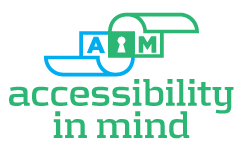The U.S. Access Board has released a
final rule that updates accessibility requirements for information and communication technology (ICT) in the federal sector covered by Section 508 of the Rehabilitation Act. The rule also refreshes guidelines for telecommunications equipment subject to Section 255 of the Communications Act. The six-year process of updating these requirements constitutes the first refresh since Section 508 was created in 1998.
"This update is essential to ensure that the Board's Section 508 standards and the Communications Act guidelines keep pace with the ever-changing technologies covered and continue to meet the access needs of people with disabilities," states Sachin Pavithran, Chair of the Board's ICT ad hoc committee. "The Access Board is grateful for the input it received from the public and stakeholders throughout the rulemaking process which greatly enhanced the final product."
The rule jointly updates and reorganizes the Section 508 standards and Section 255 guidelines in response to market trends and innovations, such as the convergence of technologies. The refresh also harmonizes these requirements with other guidelines and standards both in the U.S. and abroad, including standards issued by the European Commission and with the Web Content Accessibility Guidelines (WCAG), a globally recognized voluntary consensus standard for web content and ICT. In fact, the rule references Level A and Level AA Success Criteria and Conformance Requirements in WCAG 2.0 and applies them not only to websites, but also to electronic documents and software.
"Throughout this process," according to Access Board Executive Director David M. Capozzi, "the Board worked very hard to ensure consistency with other consensus guidelines and international standards to promote global harmonization and facilitate compliance." He noted that, "ICT requirements that are closely aligned remove ambiguity, increase marketplace competition, and lead to better accessibility features and outcomes."
The updated requirements specify the technologies covered and provide both performance-based and technical requirements for hardware, software, and support documentation and services. Access is addressed for all types of disabilities, including those pertaining to vision, hearing, color perception, speech, cognition, manual dexterity, and reach. The rule, which will be published later this month in the
Federal Register, restructures provisions so that they are categorized by functionality instead of by product type due to the increasingly multi-functional capabilities of ICT products. Revisions are also made to improve ICT usability, including interoperability with assistive technologies, and to clarify the types of ICT covered, such as electronic documents.
The Board released a proposed version of the rule for public comment in February 2015 and, before that, earlier drafts of the rule. The rule is based on recommendations from an advisory panel the Board chartered, the Telecommunications and Electronic and Information Technology Advisory Committee which included representatives from industry, disability groups, government agencies, foreign countries, and other stakeholders.
The rule will take effect
in one year. The Section 508 standards, which are incorporated into the federal government's procurement regulations, apply to ICT procured, developed, maintained, or used by federal agencies. The Communications Act guidelines cover telephones, cell phones, pagers, computers with modems, switching equipment and other telecommunications equipment.
The Board will conduct a
webinar on the rule on
February 2.

